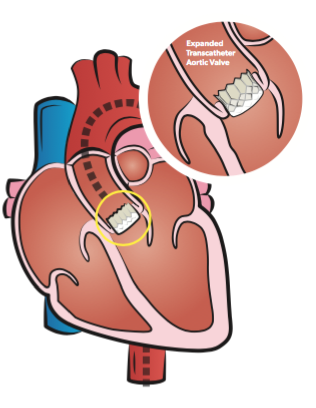
What is TAVR?
Usually, treatment of tight aortic valve requires an open heart surgery to surgically replace the old degenerated aortic valve. However, some patients are high-surgical risk for open heart surgery with a “sternotomy”. TAVR (transcatheter aortic valve replacement) or TAVI(transcatheter aortic valve implantation) is a minimally invasive catheter based procedure for patients who are deemed high-surgical risk avoiding the conventional open heart surgery.
How does it work?
Somewhat similar to a stent placed in an artery, the TAVR approach delivers a fully collapsible replacement valve to the valve site through a catheter. Once the new valve is expanded, it pushes the old valve leaflets out of the way and the tissue in the replacement valve takes over the job of regulating blood flow.
Results and Expectations
A patient’s experience with a TAVR procedure may be comparable to a balloon treatment or even an angiogram in terms of down time and recovery, and will likely require a shorter hospital stay (average 1-2 days). TAVR can be an effective option to improve quality of life in patients who otherwise have limited choices for repair of their aortic valve. Most patients can go back to their lifestyle after a few days and return to normal activities faster than with conventional surgery.